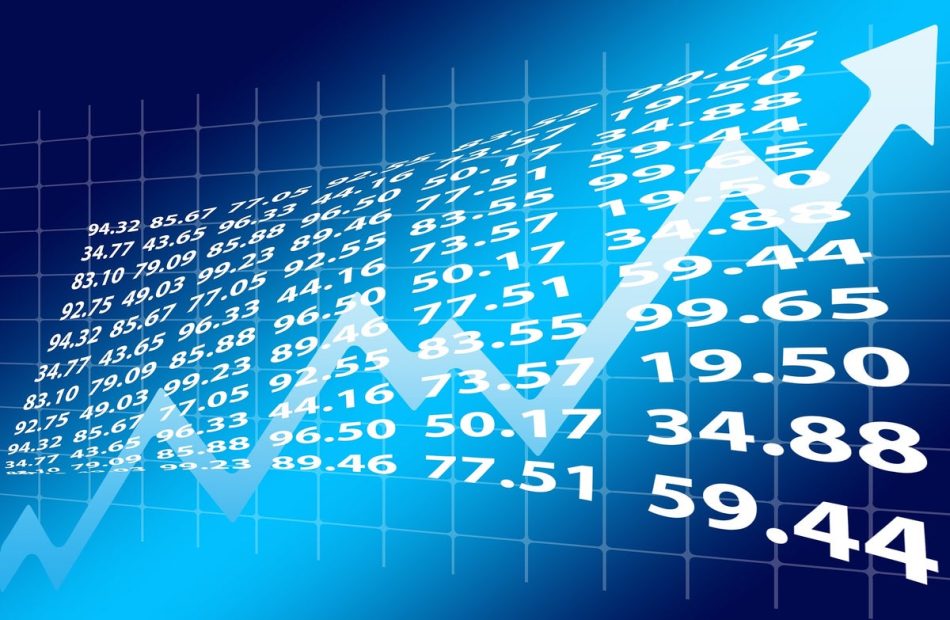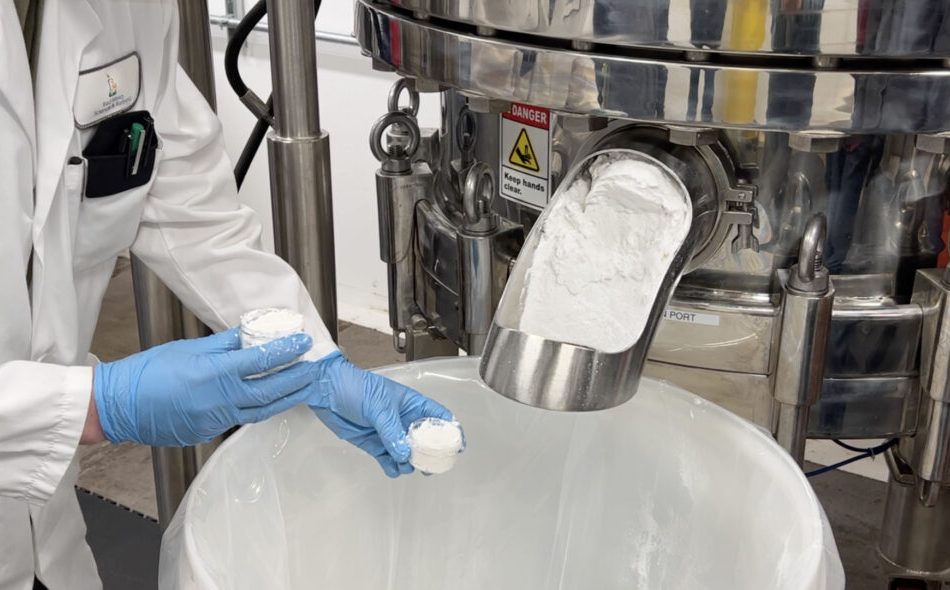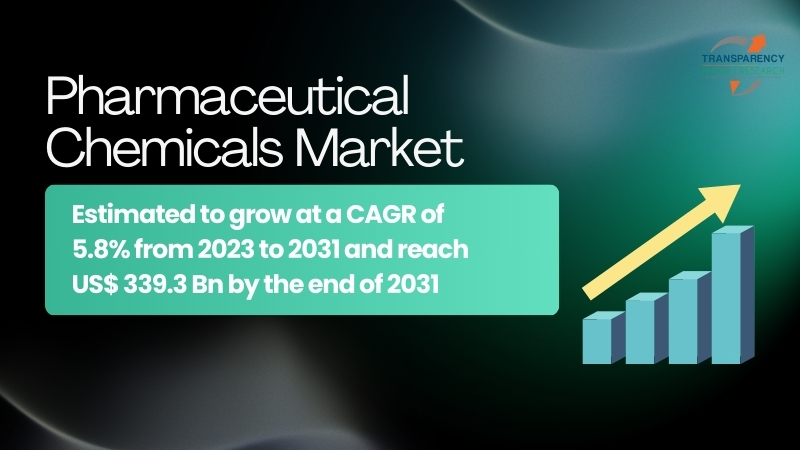Insider Unloading: Jeffrey T Diehl Sells $3.44M Worth Of Paylocity Holding Shares
A substantial insider sell was reported on November 7, by Jeffrey T Diehl, Board Member at Paylocity Holding PCTY, based on the recent SEC filing.
What Happened: After conducting a thorough analysis, Diehl sold 17,729 shares of Paylocity Holding. This information was disclosed in a Form 4 filing with the U.S. Securities and Exchange Commission on Thursday. The total transaction value is $3,443,121.
The latest market snapshot at Friday morning reveals Paylocity Holding shares down by 0.73%, trading at $209.18.
About Paylocity Holding
Paylocity is a provider of payroll and human capital management solutions servicing small- to midsize clients in the United States. The company was founded in 1997 and targets businesses with 10-5,000 employees and services about 39,000 clients as of fiscal 2024. Alongside core payroll services, Paylocity offers HCM solutions such as time and attendance and recruiting software as well as workplace collaboration and communication tools.
Financial Milestones: Paylocity Holding’s Journey
Decline in Revenue: Over the 3 months period, Paylocity Holding faced challenges, resulting in a decline of approximately -12.5% in revenue growth as of 30 September, 2024. This signifies a reduction in the company’s top-line earnings. As compared to its peers, the revenue growth lags behind its industry peers. The company achieved a growth rate lower than the average among peers in Industrials sector.
Profitability Metrics:
-
Gross Margin: With a high gross margin of 68.05%, the company demonstrates effective cost control and strong profitability relative to its peers.
-
Earnings per Share (EPS): Paylocity Holding’s EPS reflects a decline, falling below the industry average with a current EPS of 0.62.
Debt Management: The company maintains a balanced debt approach with a debt-to-equity ratio below industry norms, standing at 0.34.
Exploring Valuation Metrics Landscape:
-
Price to Earnings (P/E) Ratio: With a higher-than-average P/E ratio of 62.71, Paylocity Holding’s stock is perceived as being overvalued in the market.
-
Price to Sales (P/S) Ratio: A higher-than-average P/S ratio of 8.87 suggests overvaluation in the eyes of investors, considering sales performance.
-
EV/EBITDA Analysis (Enterprise Value to its Earnings Before Interest, Taxes, Depreciation & Amortization): Paylocity Holding’s EV/EBITDA ratio, surpassing industry averages at 35.68, positions it with an above-average valuation in the market.
Market Capitalization Analysis: Reflecting a smaller scale, the company’s market capitalization is positioned below industry averages. This could be attributed to factors such as growth expectations or operational capacity.
Now trade stocks online commission free with Charles Schwab, a trusted and complete investment firm.
Why Pay Attention to Insider Transactions
Insider transactions shouldn’t be used primarily to make an investing decision, however an insider transaction can be an important factor in the investing decision.
In the context of legal matters, the term “insider” refers to any officer, director, or beneficial owner holding more than ten percent of a company’s equity securities, as outlined by Section 12 of the Securities Exchange Act of 1934. This includes executives in the c-suite and significant hedge funds. Such insiders are obligated to report their transactions through a Form 4 filing, which must be completed within two business days of the transaction.
Pointing towards optimism, a company insider’s new purchase signals their positive anticipation for the stock to rise.
Despite insider sells not always signaling a bearish sentiment, they can be driven by various factors.
A Closer Look at Important Transaction Codes
Investors prefer focusing on transactions that take place in the open market, indicated in Table I of the Form 4 filing. A P in Box 3 indicates a purchase, while S indicates a sale. Transaction code C indicates the conversion of an option, and transaction code A indicates grant, award or other acquisition of securities from the company.
Check Out The Full List Of Paylocity Holding’s Insider Trades.
Insider Buying Alert: Profit from C-Suite Moves
Benzinga Edge reveals every insider trade in real-time. Don’t miss the next big stock move driven by insider confidence. Unlock this ultimate sentiment indicator now. Click here for access.
This article was generated by Benzinga’s automated content engine and reviewed by an editor.
Market News and Data brought to you by Benzinga APIs
© 2024 Benzinga.com. Benzinga does not provide investment advice. All rights reserved.
Sell Alert: Leon Topalian Cashes Out $1.86M In Nucor Stock
Making a noteworthy insider sell on November 7, Leon Topalian, Chair at Nucor NUE, is reported in the latest SEC filing.
What Happened: Topalian opted to sell 11,000 shares of Nucor, according to a Form 4 filing with the U.S. Securities and Exchange Commission on Thursday. The transaction’s total worth stands at $1,860,239.
The latest market snapshot at Friday morning reveals Nucor shares down by 3.12%, trading at $162.5.
About Nucor
Nucor Corp manufactures steel and steel products. The company also produces direct reduced iron for use in its steel mills. The operations include international trading and sales companies that buy and sell steel and steel products manufactured by the company and others. The operating business segments are: steel mills, steel products, and raw materials, the steel mills segment derives maximum revenue. The steel mills segment includes carbon and alloy steel in sheet, bars, structural and plate; steel trading businesses; rebar distribution businesses; and Nucor’s equity method investments in NuMit and NJSM.
Nucor: Delving into Financials
Negative Revenue Trend: Examining Nucor’s financials over 3 months reveals challenges. As of 30 September, 2024, the company experienced a decline of approximately -15.17% in revenue growth, reflecting a decrease in top-line earnings. When compared to others in the Materials sector, the company faces challenges, achieving a growth rate lower than the average among peers.
Insights into Profitability:
-
Gross Margin: The company shows a low gross margin of 10.18%, indicating concerns regarding cost management and overall profitability relative to its industry counterparts.
-
Earnings per Share (EPS): Nucor’s EPS lags behind the industry average, indicating concerns and potential challenges with a current EPS of 1.05.
Debt Management: The company maintains a balanced debt approach with a debt-to-equity ratio below industry norms, standing at 0.34.
Assessing Valuation Metrics:
-
Price to Earnings (P/E) Ratio: Nucor’s P/E ratio of 15.51 is below the industry average, suggesting the stock may be undervalued.
-
Price to Sales (P/S) Ratio: The current P/S ratio of 1.24 is above industry norms, reflecting an elevated valuation for Nucor’s stock and potential overvaluation based on sales performance.
-
EV/EBITDA Analysis (Enterprise Value to its Earnings Before Interest, Taxes, Depreciation & Amortization): Indicated by a lower-than-industry-average EV/EBITDA ratio of 7.78, the company suggests a potential undervaluation, which might be advantageous for value-focused investors.
Market Capitalization: Surpassing industry standards, the company’s market capitalization asserts its dominance in terms of size, suggesting a robust market position.
Now trade stocks online commission free with Charles Schwab, a trusted and complete investment firm.
The Impact of Insider Transactions on Investments
While insider transactions should not be the sole basis for making investment decisions, they can play a significant role in an investor’s decision-making process.
Considering the legal perspective, an “insider” is defined as any officer, director, or beneficial owner holding more than ten percent of a company’s equity securities, according to Section 12 of the Securities Exchange Act of 1934. This includes executives in the c-suite and major hedge funds. These insiders are mandated to disclose their transactions through a Form 4 filing, to be submitted within two business days of the transaction.
Pointing towards optimism, a company insider’s new purchase signals their positive anticipation for the stock to rise.
Nevertheless, insider sells may not necessarily indicate a bearish view and can be influenced by various factors.
Essential Transaction Codes Unveiled
Delving into transactions, investors typically prioritize those unfolding in the open market, as precisely outlined in Table I of the Form 4 filing. A P in Box 3 indicates a purchase, while S signifies a sale. Transaction code C signals the conversion of an option, and transaction code A denotes a grant, award, or other acquisition of securities from the company.
Check Out The Full List Of Nucor’s Insider Trades.
Insider Buying Alert: Profit from C-Suite Moves
Benzinga Edge reveals every insider trade in real-time. Don’t miss the next big stock move driven by insider confidence. Unlock this ultimate sentiment indicator now. Click here for access.
This article was generated by Benzinga’s automated content engine and reviewed by an editor.
Market News and Data brought to you by Benzinga APIs
© 2024 Benzinga.com. Benzinga does not provide investment advice. All rights reserved.
No Middleman, No Markup: How Red Mesa Is Slashing Costs With Around-The-Clock Hemp Refinement
Why allow intermediaries to add unnecessary costs when direct relationships can bring quality to the forefront? As supply chains tighten across industries, Red Mesa Science & Refining is pioneering a streamlined approach to bring minor cannabinoids to market.
By bypassing brokers and relying on an efficient, around-the-clock refinement process, Red Mesa aims to reduce costs, ensure product consistency and empower the true stewards of hemp – the growers and refiners themselves.
Jeff Applegate, Red Mesa’s president, puts it simply. “Collaborating directly with qualified, experienced farmers and extractors is essential to keeping costs low and quality high.” It’s a model that prioritizes trust and accountability within every step of the supply chain.
- Get Benzinga’s exclusive analysis and the top news about the cannabis industry and markets daily in your inbox for free. Subscribe to our newsletter here. You can’t afford to miss out if you’re serious about the business.
Leverage Instead Of Liability
Applegate detailed how brokers often disrupt the hemp supply chain by imposing additional costs, sometimes up to 15%, which can hinder farmer’s profits and drive up expenses for manufacturers, creating an unsustainable model for both sides.
Red Mesa has strategically positioned itself within the cannabinoid supply chain to minimize intermediaries and maintain competitive production costs. “Keeping production costs low is fundamental to industry success,” Applegate told Benzinga Cannabis in an exclusive interview. “Collaborating directly with farmers and extractors in a cohesive supply chain is essential to keep our cost of input as a leverage instead of a liability.”
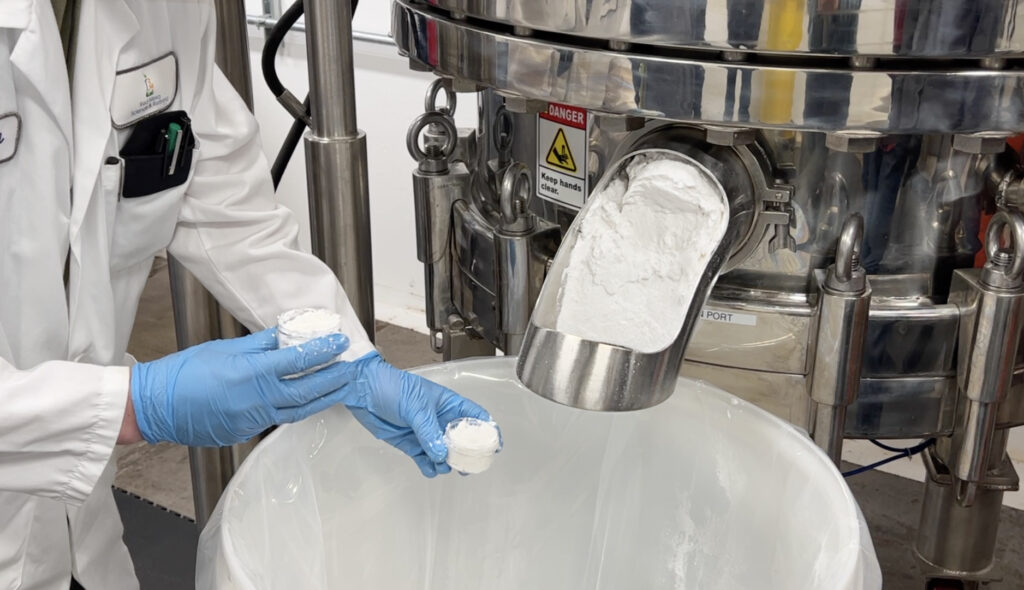
“We’re seeing less interference now, but reducing reliance on brokers is essential for a cost-effective system. The farmer and the customer need to be directly tied to one another so the farmer gets a fair return,” he explained.
Not An Easy Crop
Sourcing consistent and affordable raw materials has presented a challenge as the hemp industry matures. Applegate explained that an initial oversupply in 2019 led to a rapid decline in hemp farming as prices plummeted.
“There was an abundance of farmers when the 2018 farm bill was put into place,” he said. “The market, the producers, wasn’t sufficiently equipped to take all of the output that came. Since 2019, we’ve had nothing but a declining number of farmers.”
“It’s not an easy crop to grow at all,” Applegate added, noting that hemp requires extensive processing before it can be used in extraction. This contrasts with the cannabis flower market, where crops can be more directly sold.
Inside Red Mesa
Red Mesa’s facility in Utah was initially a cabinet shop before being repurposed for hemp refinement. With its high power capacity – essential for their machinery – the location proved ideal.
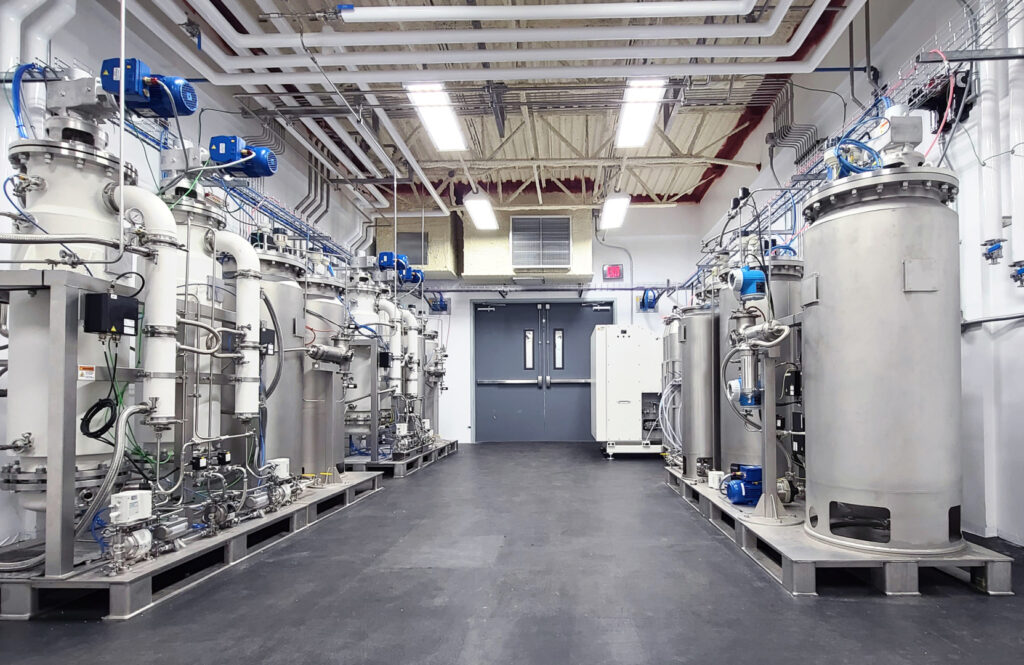
Applegate described how the production process flows from crude oil intake to distillation. This is further refined through crystallization and chromatography. “In distillation, we have the finished product. It’s usually a light yellow to golden color, thicker in viscosity than water, almost syrup-like when warm,” he explained.
Once the distillate undergoes crystallization, Red Mesa is left with a white, fluffy powder—ready for B2B sale. “We didn’t walk across the bridge to become a white labeler or finished goods company,” he said. “Our goal is to create the most coveted, consistent outputs to win the market.”
A Competitive Edge In Minor Cannabinoids
Red Mesa’s botanical, non-synthetic refinement process sets it apart by isolating rare cannabinoids—such as CBN, CBT, and CBL—directly from hemp without chemical conversions.
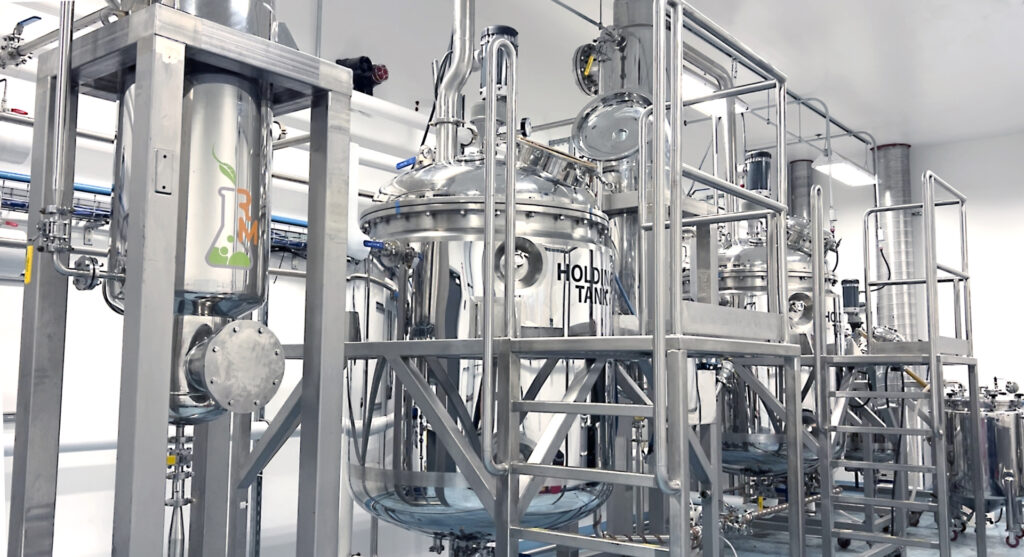
“Our botanical refining process generates final outputs derived directly from the hemp plant without the use of catalysts and acids required for chemical conversion processes,” Applegate explained.
To achieve this, Red Mesa made substantial investments early on. “To be the first refiner to offer rare minors such as CBN, CBL, and CBT at kilogram scale, we had to make significant investments in large-scale chromatography very early in the company’s history,” Applegate noted.
Read Also: Sold Out Before Hitting Shelves: Why Did AYR Wellness Snatch Up This Local Cannabis Brand?
The Red Mesa Standard: ISO Certification, And FDA Registration
“The Red Mesa Standard” represents a commitment to quality and consistency that Applegate says will set them apart. “We have an end-to-end certification from the beginning of our business to the end,” he said, contrasting this with many industry peers who only certify specific departments. Additionally, Red Mesa voluntarily registers with the FDA as a food ingredient company, even though it’s not required.
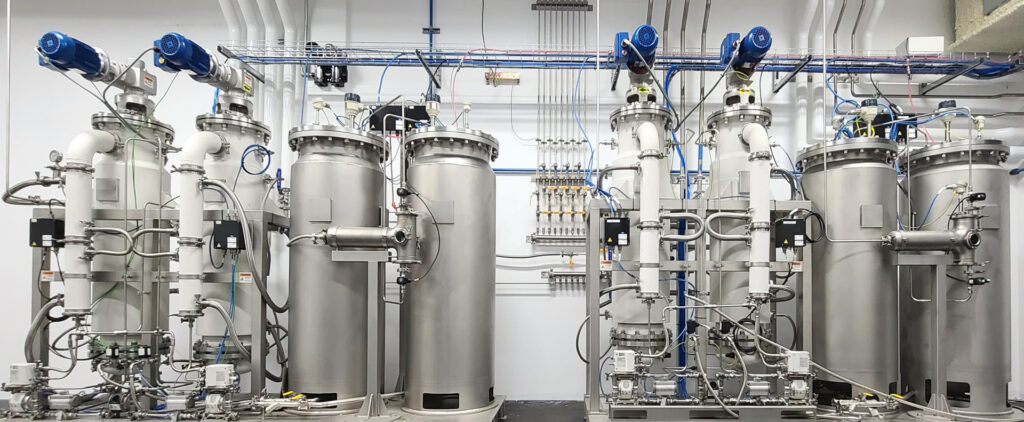
24/7
With operations currently running at about 45% of their 50,000-square-foot facility, Red Mesa is poised for growth. “We operate 24 hours a day, seven days a week,” Applegate shared, adding that they gradually scaled up from single-shift days to continuous operation.
Looking forward, Red Mesa plans to enter the Japanese market in 2025 and establish regional distribution hubs to serve global customers.
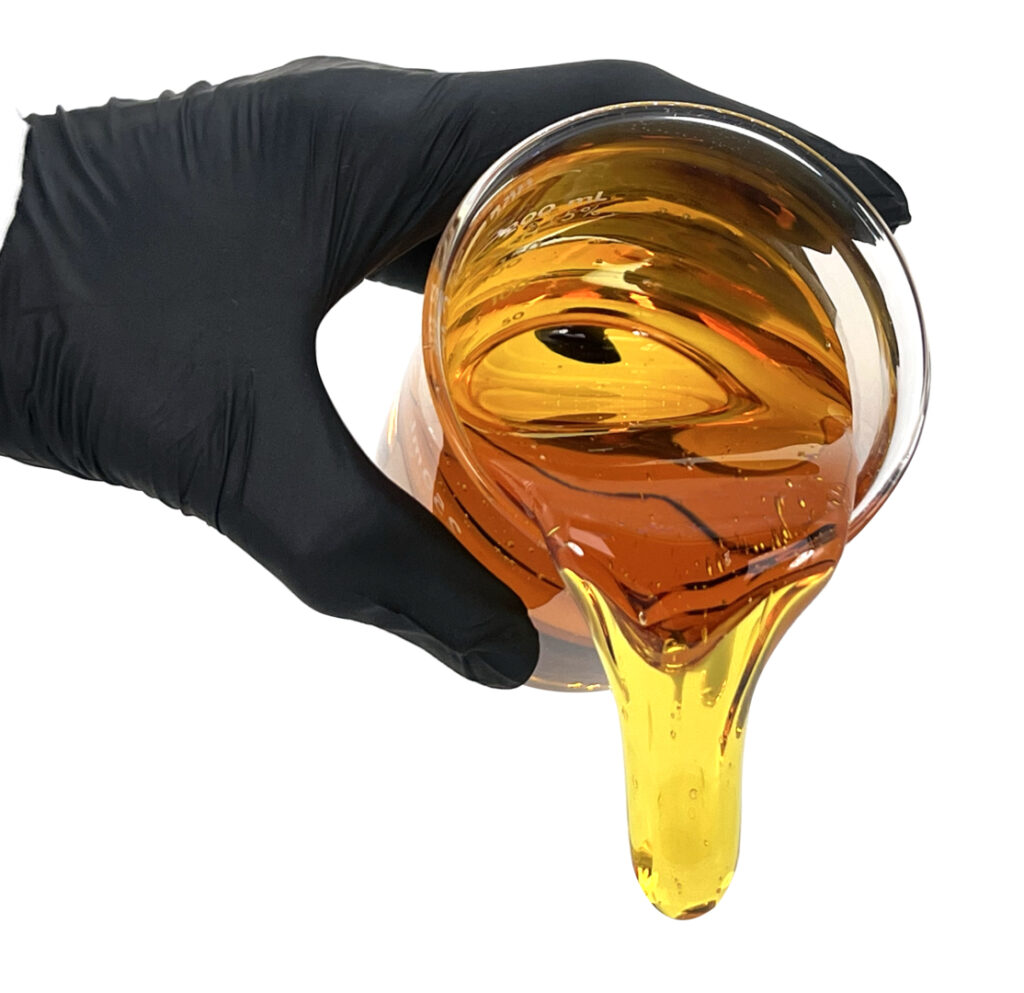
While growth is a priority, so too is legislative reform.
“The lack of clear rules for cannabinoid production is probably the biggest barrier we’ve seen to adoption. To bring prices down and make cannabinoids more accessible, we need efficient production coupled with thoughtful regulation,” Applegate said.
He emphasized that regulation and cost efficiency will help expand the market by making cannabinoids accessible to a wider consumer base.
Read Next: Think You Can Do It All? 20,000 Reasons Why Automation Outperforms A Broad Approach In Cannabis
© 2024 Benzinga.com. Benzinga does not provide investment advice. All rights reserved.
Obama-Era Economist Jason Furman Warns Fed's Inflation Outlook May Be Too Optimistic — Peter Schiff Slams Powell's Strategy Amid National Debt Concerns
Leading economists offered contrasting views on Thursday after the Federal Reserve’s 25-basis-point rate cut, with some warning of persistent inflation risks while others supported the central bank’s gradual easing approach.
What Happened: Jason Furman, a key figure in 44th U.S. President Barack Obama’s administration expressed skepticism about the Fed’s balanced risk assessment, pointing to concerning inflation indicators.
“Core PCE inflation is 2.7% (above target),” Furman noted on X, warning that inflation could climb to “2.8% or possibly even 2.9%.” He suggested this trend could complicate the Fed’s planned rate reduction schedule unless labor markets weaken significantly.
Economist Peter Schiff delivered sharp criticism of Fed Chair Jerome Powell‘s inflation-targeting strategy, citing structural challenges.
“The Fed cut interest rates by 25 basis points, claiming they’re confident they’ll achieve their long-term inflation target of 2%,” Schiff wrote on X. “Powell can’t possibly believe that, considering a $36 trillion National Debt and the prospect of 2025 tax cuts sending demand and deficits soaring.”
Wells Fargo struck a more moderate tone, with strategist Luis Alvarado telling Yahoo Finance they expect “another [cut] in December,” while maintaining flexibility about 2025 policy adjustments.
Why It Matters: The Fed’s decision, which lowered rates to 4.5%-4.75%, came amid robust economic indicators including 2.8% second-quarter GDP growth. Powell dismissed October’s weak employment data as temporary, citing strikes and weather disruptions.
Markets responded modestly to the day’s events, with the U.S. Dollar Index dipping 0.07% to 104.44 and the 10-year Treasury yield inching up to 4.353%.
The SPDR S&P 500 ETF SPY closed at $595.61, up 0.77%, with a modest after-hours increase of 0.02%. The iShares Russell 2000 ETF IWM finished at $236.38, down 0.35%, though it rose 0.15% in after-hours trading.
The S&P 500 gained 0.74%, reaching a record high of 5,973.10, while the Nasdaq advanced 1.51% to 19,269.46, marking its first close above 19,000. The Dow Jones Industrial Average was largely unchanged, ticking down by less than one point to end at 43,729.34.
S&P 500, Dow, and Nasdaq 100 futures were flat. On the currency front, the Japanese Yen held steady at $0.0065, while the Euro slipped by 0.11% to $1.0788.
Read Next:
Federal Reserve illustration created using artificial intelligence via MidJourney.
Disclaimer: This content was partially produced with the help of AI tools and was reviewed and published by Benzinga editors.
Market News and Data brought to you by Benzinga APIs
© 2024 Benzinga.com. Benzinga does not provide investment advice. All rights reserved.
Automotive Silicone Market Size, Revenue Share, Scope and Forecast Report 2024 to 2031 – Exactitude Consultancy
Luton, Bedfordshire, United Kingdom, Nov. 08, 2024 (GLOBE NEWSWIRE) — The growth of the automotive silicone market is being driven by several factors, including increased demand for silicones in various automotive applications and stricter government regulations on vehicle emissions. Silicones are widely used in automotive components such as seat belts, lubricants, door stoppers, additives, greases, sealants, and connectors due to their advantageous properties like thermal stability, low reactivity, high resistivity, and durability. As a result, products like elastomers, adhesives, and sealants have seen higher demand from automotive manufacturers utilizing silicone in production.
To meet the growing needs of the automotive industry, silicone products are increasingly being used to enhance stability and performance across a wide range of applications, including interior and exterior parts, electrical systems, suspension components, and engine drive systems. Government initiatives, such as the European Union’s efforts to reduce CO2 emissions and the U.S. Corporate Average Fuel Economy (CAFÉ) standards, are also contributing to the rise in demand for lighter and more efficient vehicles. These regulatory measures are likely to fuel the demand for silicone materials that support such innovations.
Access PDF Sample Report (Including Graphs, Charts & Figures) @
https://exactitudeconsultancy.com/reports/17226/automotive-silicone-market/#request-a-sample
The rise of electric vehicles (EVs) in response to stricter environmental regulations is further driving the adoption of silicone products, particularly in applications such as battery systems and electronics. Moreover, concerns over depleting crude oil reserves and the environmental impact of plastic materials are pushing the automotive industry to explore more sustainable alternatives like silicones, especially as government regulations increasingly restrict plastic use in various sectors.
Despite these positive trends, the automotive silicone market was impacted by the COVID-19 pandemic, which disrupted supply chains and reduced production capacity, affecting market demand. In response to growing environmental concerns, manufacturers are also developing innovative silicone components. For example, Shin-Etsu Chemical Co. expanded its product line in January 2024 to include thermal interface materials for electric vehicles, addressing the need for effective heat management in lithium-ion batteries and electronic systems.
Growth of the Automotive Silicone Market: Key Products and Applications
The automotive silicone market is primarily driven by the elastomer segment, which held more than 44.0% of the market share in 2024. Elastomers’ flexibility, resistance to high temperatures, and ability to endure significant physical stress make them crucial for various automotive applications, including tires, hoses, seat belts, dashboards, and enclosures.
Silicone resins also play a significant role, offering UV resistance, chemical stability, and oxidation resistance, making them ideal for protective coatings and finishes on automotive parts. Furthermore, products such as silanes and siliconates are gaining traction due to their gloss, durability, and resistance to detergents, boosting the market growth.
In terms of application, the interior and exterior segment dominates the market, driven by the increasing demand for silicone in components like airbags, exhaust hangers, headlamps, and shock absorbers. Silicone’s strength and ability to withstand high temperatures contribute to its widespread use in bonding, sealing, and enhancing the durability of these automotive components.
Automotive Silicone Market Application Insights: Interior, Exterior, and Electrical Systems
The interior and exterior parts segment dominated the global automotive silicone market, contributing over 39.0% to total revenue in 2024. The rise in demand for lightweight vehicles worldwide has spurred the need for automotive parts such as damper oils, auto paint additives, and hard coating agents, which benefit from the thermal stability and durability of silicone materials.
Additionally, the high electrical resistivity of silicones is increasing their usage in automotive electrical systems. As in-car infotainment systems and electronic displays become more prevalent, the demand for silicone in these components is expected to grow. Innovations in in-dash displays and responsive touch screens are expected to open new opportunities in the market in the coming years. These advancements contribute to the sustained growth of silicone applications in automotive interiors and electronic systems.
Asia Pacific Automotive Silicone Market Insights
Asia Pacific was the leading region in the global automotive silicone market in 2024, accounting for more than 46.0% of the total market revenue. China led both volume and revenue generation within the region, with major automotive companies such as SAIC Motor, Dongfeng, FAW, Chery, and Chang’an driving production.
The region’s dominance in the automotive silicone market is driven by significant growth in automobile manufacturing, supported by rising living standards and income levels due to expanded labor opportunities. As the economy in Asia Pacific continues to develop rapidly, many foreign automotive manufacturers are setting up production plants in the region, further boosting demand for automotive components and materials, including silicone-based products. The high volume of automotive production in the region makes it the primary market for automotive silicone applications.
Market Driver: Growth of the Automotive Industry in Asia Pacific
The robust growth of the automotive industry in Asia Pacific is a major driver for the expansion of the automotive silicone market. The region’s industrialization, urbanization, and rising consumer purchasing power have led to a surge in automotive demand. Countries such as China, Japan, India, and South Korea have seen significant increases in vehicle production and sales, which have created favorable conditions for the automotive silicone market.
Moreover, the transition to electric mobility in the region presents substantial growth opportunities. Governments in countries like China and India are encouraging the adoption of electric and hybrid vehicles to reduce pollution and dependence on fossil fuels. This shift is fueling the demand for silicone materials, which are crucial for electric vehicle components, including battery systems, charging infrastructure, and thermal management solutions.
The expanding aftermarket for automotive components in Asia Pacific also contributes to market growth. As the vehicle fleet continues to grow, the demand for durable and reliable automotive parts increases. Silicone materials are increasingly used in replacement parts due to their long-term performance and reliability.
Report Link Click Here: https://exactitudeconsultancy.com/reports/17226/automotive-silicone-market/
Restraint: Growing Adoption of Electric Vehicles
The rise in electric vehicle (EV) adoption, particularly in Europe and North America, is a key restraint on the growth of the automotive silicone market. As electric vehicles become more affordable and demand for them rises, traditional automotive silicone applications, particularly in engine components and transmission parts, face reduced demand. With the increasing development of EV charging infrastructure, the focus has shifted from engine management, fuel efficiency, and emission control—areas where silicone products are heavily used—to components related to battery technology and electric drivetrains. This transition significantly impacts silicone demand, especially in sectors like engine and exhaust components.
Opportunity: Advancements in Automation Driving Technology
The shift toward autonomous vehicles presents new opportunities for the automotive silicone market. As vehicles become more automated, there is an increasing need for sensors, connectors, and electronic components, areas where silicone excels due to its electrical insulation properties and temperature resistance. Silicone’s high dielectric strength ensures the reliable transmission of signals in these systems, preventing malfunctions. Moreover, its ability to withstand high temperatures makes it ideal for use in components near engines or exhaust systems, critical for autonomous vehicle functionality. As automation technologies advance, the demand for silicone-based materials is set to grow.
Challenge: Supply Chain Disruptions
The automotive silicone supply chain faces challenges related to raw material availability and specialized silicone grades required for specific automotive applications. Disruptions in the supply of these materials can result in production delays or compromise the quality of automotive components. Additionally, dependency on a limited number of suppliers for critical raw materials or specialized formulations increases the risk of supply chain disruptions, which can lead to shortages, delays, or higher costs. These disruptions can impede the growth and stability of the automotive silicone market.
Key Insights into the Automotive Silicone Market (2022)
In 2022, the interior and exterior applications segment was the largest in the automotive silicone market by value. Automotive silicone plays a critical role in a variety of components, enhancing performance and safety. Key applications include airbag covers, which ensure reliable deployment, silicone exhaust hangers offering excellent heat resistance and vibration damping, and headlamp seals that provide water and dust protection. Additionally, silicone hoses are essential for their flexibility and temperature resistance, while interior trims, shock absorbers, and grommets benefit from silicone’s long-lasting durability.
The electrical application segment followed closely, representing the second-largest share in the market. Automotive silicone is pivotal for maintaining effective electrical systems, offering superior insulation and damping properties. It is used extensively in ignition cables, spark plug boots, and high-tension cables, ensuring efficient power transfer and protecting critical components from heat and environmental damage.
Regionally, Asia Pacific dominated the automotive silicone market in 2022, with China leading the way. The region is expected to continue its rapid growth, driven by high demand for automotive silicone across various applications, especially as automotive production and technological innovations surge in the area.
Market Segments:
- By Product
- Elastomers
- Adhesives And Sealants
- Resins
- Fluids
- Gels
- Others (PA)
- By Application
- Interior And Exterior Parts
- Engine & Drive Train System
- Electrical System
- Suspension Systems
- Others
- By Geography
Recent Developments
- In March 2023, Shin-Etsu Chemical company developed a silicone rubber formulation specifically designed for high-voltage cables in automobiles. This new material is intended to serve as an ideal insulation covering, offering high resistance and durability for automotive applications in electric vehicles.
- In December 2023, Dow launched a new series of liquid silicone rubber, aimed at multiple automotive applications such as connector seals, battery vent gaskets, and radiator gasket seals for electric and hybrid vehicles. This product also caters to the environmental protection needs of autonomous vehicle lidar and radar housings.
- In May 2022, Dow introduced the SALISTIC MS-5002 moldable silicone, a liquid silicone rubber (LSR) product with very low mold fouling, ensuring faster cycle times in automotive manufacturing. It is used in high-quality optics for adaptive driving beams (ADB), enhancing vehicle lighting systems.
- In July 2022, Wacker started an ambitious expansion project for its Charleston site, with plans to build new silicone production facilities. This extensive investment, exceeding USD 200 million, is aimed at boosting silicone production capacity for the automotive sector, including applications in electromobility and electric vehicle systems.
- In July 2022, In Panagarh, India, Wacker inaugurated a new plant focused on manufacturing silicone rubber and ready-to-use silicone compounds. This facility will support applications in electromobility, medical technology, and electrical transmission and distribution.
Get a Sample PDF Brochure:
https://exactitudeconsultancy.com/reports/17226/automotive-silicone-market/#request-a-sample
Related Reports:
Automotive E-E Architecture Market
https://exactitudeconsultancy.com/reports/987/automotive-e-e-architecture-market/
The Global Automotive E-E Architecture Market is expected to grow at more than 11.44% CAGR from 2019 to 2028. It is expected to reach above USD 184.9 billion by 2028 from a little above USD 84 billion in 2019.
Automotive Plastics Market
https://exactitudeconsultancy.com/reports/2103/automotive-plastics-market/
The global automotive plastics market is expected to grow at 7.9% CAGR from 2019 to 2028. It is expected to reach above USD 35.93 billion by 2028 from USD 18.12 billion in 2019.
Automotive Sunroof Market
https://exactitudeconsultancy.com/reports/1043/automotive-sunroof-market/
The Global Automotive Sunroof Market size is expected to grow at more than 6% CAGR from 2019 to 2026. It is expected to reach above USD 19 billion by 2026 from USD 15 billion in 2019.
Automotive Steering Systems Market
https://exactitudeconsultancy.com/reports/1802/automotive-steering-systems-market/
The global automotive steering systems market is expected to grow at a 4.5% CAGR from 2019 to 2028. It is expected to reach above USD 40 billion by 2028 from USD 27 billion in 2019.
Electric Vehicle Market
https://exactitudeconsultancy.com/reports/3382/electric-vehicle-market/
The global Electric Vehicles Market is expected to grow at 16.4% CAGR from 2022 to 2029. It is expected to reach above USD 628 billion by 2029 from USD 160 billion in 2020.
Smart Containers Market
https://exactitudeconsultancy.com/reports/824/smart-containers-market/
The Global Smart Containers Market size is expected to grow at more than 17% CAGR from 2015 to 2025. It is expected to reach above USD 7.1 billion by 2025 from USD 1.6 billion in 2015.
Marine Lubricants Market
https://exactitudeconsultancy.com/reports/3126/marine-lubricants-market/
The global marine lubricants market is expected to grow at a 2.4% CAGR from 2022 to 2029. It is expected to reach above USD 11.9 billion by 2029 from USD 6.8 billion in 2020.
Metalworking Fluids Market
https://exactitudeconsultancy.com/reports/3219/metalworking-fluids-market/
The global metalworking fluids market is expected to grow at 4.2% CAGR from 2022 to 2029. It is expected to reach above USD 14.3 billion by 2029 from USD 8.65 billion in 2020.
Electric Vehicle Charging Stations Market
https://exactitudeconsultancy.com/reports/1830/electric-vehicle-charging-stations-market/
The global Electric Vehicle Charging Stations Market is expected to grow at 21% CAGR from 2019 to 2028. It is expected to reach above USD 110 billion by 2028 from USD 20 billion in 2019.
Automotive Coatings Market
https://exactitudeconsultancy.com/reports/4412/automotive-coatings-market/
The global automotive coatings market is expected to grow at 4.3% CAGR from 2020 to 2029. It is expected to reach above USD 24.5 billion by 2029 from USD 16.45 billion in 2020.
Logistics Automation Market
https://exactitudeconsultancy.com/reports/2234/logistics-automation-market/
The global logistics automation market is expected to grow a 10% CAGR from 2019 to 2028. It is expected to reach above USD 103.75 billion by 2028 from USD 44 billion in 2019.
Automotive Haptic Technology Market
https://exactitudeconsultancy.com/reports/2608/automotive-haptic-technology-market/
The global automotive haptic technology market is expected to grow at 11% CAGR from 2022 to 2029. It is expected to reach above USD 5.76 billion by 2029 from USD 2.25 billion in 2020.

Contact Data Irfan Tamboli (Head of Sales) Phone: + 1704 266 3234 Email: sales@exactitudeconsultancy.com
© 2024 Benzinga.com. Benzinga does not provide investment advice. All rights reserved.
Pharmaceutical Chemicals Market Size to be Worth USD 339.3 billion by 2031, with a Projected CAGR of 5.8% | Says Transparency Market Research, Inc.
Wilmington, Delaware, United States, Transparency Market Research Inc. -, Nov. 08, 2024 (GLOBE NEWSWIRE) — The pharmaceutical chemicals market (제약 화학 시장) was valued at US$ 204.3 billion in 2022. From 2023 to 2031, the market is expected to grow at a CAGR of 5.8%, reaching US$ 339.3 billion. Monoclonal antibodies, gene therapies, and cell-based therapies are examples of biopharmaceuticals expected to remain popular. This change will drive the need for specific pharmaceutical chemicals utilized in biologics production.
Sustained implementation of cutting-edge manufacturing techniques, such 3D printing and ongoing manufacturing, could boost productivity, cut expenses, and raise the calibre of pharmaceutical chemical manufacturing. Drugs customized for specific patients may be developed due to personalized medicine and genomics developments. This may need the use of more specialized and customized medicinal ingredients.
Research could be streamlined, and pharmaceutical chemical production could be more efficiently run by integrating digital technology, data analytics, and artificial intelligence into drug discovery and development procedures. Growing awareness of environmental concerns may drive the adoption of green chemistry principles in the pharmaceutical industry. Pharmaceutical chemicals’ production processes and specs could change as regulatory landscapes change, including quality standards.
Download PDF Brochure: https://www.transparencymarketresearch.com/sample/sample.php?flag=S&rep_id=37685
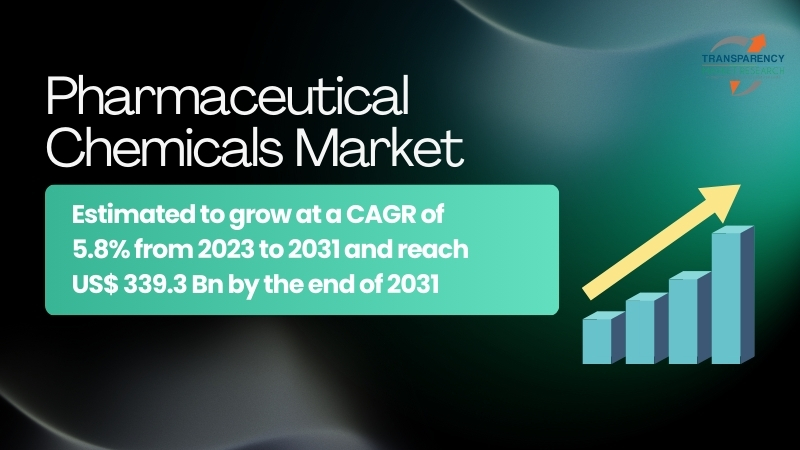
Key Findings of the Market Report
- Based on type analysis, the solvents segment is expected to drive demand for the pharmaceutical chemicals market.
- Based on drug type analysis, the generic segment is likely to create a market for pharmaceutical chemicals market.
- North America accounted for a majority of the global market in 2022,
- Pharmacology and biotechnology are expanding in Asia, and indigenous drug development is becoming more prevalent.
Global Pharmaceutical Chemicals Market: Growth Drivers
- Global healthcare spending continues to increase, which leads to an increasing demand for pharmaceuticals, particularly pharmaceutical compounds. As the public and private sectors invest heavily in healthcare infrastructure, the demand for pharmaceutical products rises.
- The pharmaceutical industry is developing novel and specialized pharmaceutical compounds as part of ongoing research and development efforts. Biotechnology and nanotechnology are two technological breakthroughs that contribute to creating novel, more potent medications.
- The rising prevalence of chronic health issues like diabetes, cancer, and cardiovascular disease drives prescription drug demand. Medicinal medications are made from a wide range of pharmaceutical compounds, which fuel the demand for those compounds.
- Businesses are sourcing raw ingredients and intermediates worldwide as the pharmaceutical industry grows internationally. Strict regulatory frameworks govern Pharmaceutics to ensure their safety and efficacy. These criteria require high-quality pharmaceutical chemicals, so goods that meet legal specifications are in greater demand.
Global Pharmaceutical Chemicals Market: Regional Landscape
- Pharmaceutical chemicals are big business in North America, playing a huge role in global pharmaceuticals. In North America, particularly in the United States, healthcare expenditures are among the highest in the world. The investment in healthcare infrastructure, research, and development has resulted in high demand for pharmaceuticals.
- Several pharmaceutical companies, research institutions, and biotechnology firms operate in the region, making it a pharmaceutical research and development hub. Pharmaceutical chemicals are in constant demand due to the need for cutting-edge pharmaceuticals.
- Pharmaceuticals in North America are regulated rigorously to protect consumers and ensure efficacy, safety, and quality. Pharmaceutic chemicals must meet these regulatory requirements to comply with them, making suppliers necessary. Biopharmaceuticals are growing rapidly in North America. Biologics contribute significantly to the demand for pharmaceutical chemicals that require complex manufacturing processes in this region.
- Pharma companies headquartered in North America are some of the largest in the world. Pharmaceutical chemicals are crucial to producing various drugs at these companies with extensive manufacturing operations. Personalized medicine and niche therapeutic areas are becoming increasingly important in specialty pharmaceuticals.
- Unique pharmaceutical chemicals tailored to specific patient populations are often used to develop such specialized drugs. The generic drug market in North America is well established. Drug manufacturers produce affordable alternatives to branded drugs by relying on stable supplies of pharmaceutical chemicals.
Unlock Growth Potential in Your Industry! Download PDF Brochure: https://www.transparencymarketresearch.com/sample/sample.php?flag=S&rep_id=37685
Global Pharmaceutical Chemicals Market: Key Players
The pharmaceutical intermediates market and bioactive compounds market are experiencing significant growth. Both patients and healthcare workers benefit from pharmaceutical analytical chemistry advances. Key players in the sector also use mergers and acquisitions to expand their businesses.
- BASF SE
- Dishman Carbogen Amcis Ltd
- Johnson-Matthey plc
- Lonza Group
- Lanxess AG
- Jubilant Pharmova Limited
- Vertellus Holdings LLC
- Porton Pharma Solutions Ltd.
- Hikal Ltd.
- Celanese Corporation
- Easter Chemical Corporation
Key Developments
- In January 2024, Arecor Therapeutics plc will expand its ongoing, collaborative formulation study with one of the world’s biggest chemical marketing and pharmaceutical companies.
- In December 2023, JB Chemicals acquired approximately 15 ophthalmology drugs from Novartis for Rs. 964 crores. As of January 2027, the acquisition will be effective. To license the same drug portfolio, Novartis will receive rupees 125 crore from JB Chemicals.
Global Pharmaceutical Chemicals Market: Segmentation
By Type Analysis
- Solvents
- Reagents/Catalysts
- KSMs/intermediates
- Building Blocks for APIs/Advanced intermediates
By Drug Type Analysis
- OTC
- Generic
- Super generic
- Proprietary
By Region
- North America
- Latin America
- Asia Pacific
- Europe
- Middle East & Africa
Gain Immediate Access to Detailed Market Insights: Purchase Now! https://www.transparencymarketresearch.com/checkout.php?rep_id=37685<ype=S
Browse More Trending Reports:
Ion Exchange Membrane Market (سوق غشاء التبادل الأيوني) – Ion exchange membranes market valued at US$ 1.3 billion in 2023. A CAGR of 6.3% is expected from 2024 to 2034, reaching US$ 2.5 billion.
Mining Chemicals Market (鉱業化学品市場) – Mining Chemicals Market to Gain Value of US$ 19.5 Billion by 2031.
About Transparency Market Research
Transparency Market Research, a global market research company registered at Wilmington, Delaware, United States, provides custom research and consulting services. Our exclusive blend of quantitative forecasting and trends analysis provides forward-looking insights for thousands of decision makers. Our experienced team of Analysts, Researchers, and Consultants use proprietary data sources and various tools & techniques to gather and analyses information.
Our data repository is continuously updated and revised by a team of research experts, so that it always reflects the latest trends and information. With a broad research and analysis capability, Transparency Market Research employs rigorous primary and secondary research techniques in developing distinctive data sets and research material for business reports.
Contact:
Transparency Market Research Inc.
CORPORATE HEADQUARTER DOWNTOWN,
1000 N. West Street,
Suite 1200, Wilmington, Delaware 19801 USA
Tel: +1-518-618-1030
USA – Canada Toll Free: 866-552-3453
Website: https://www.transparencymarketresearch.com
Email: sales@transparencymarketresearch.com
Follow Us: LinkedIn| Twitter| Blog | YouTube

Market News and Data brought to you by Benzinga APIs
© 2024 Benzinga.com. Benzinga does not provide investment advice. All rights reserved.
Peony from Heze Settles in Bulgaria, "Land of Roses", Harmony, Mutual Learning among Civilizations
HEZE, China, Nov. 08, 2024 (GLOBE NEWSWIRE) — From October 30 to November 1, the Chinese Embassy in the Republic of Bulgaria, in collaboration with a delegation sent by the CPC Heze Municipal Committee and Heze government, hosted celebratory activities for the unveiling ceremony of the Peony Garden themed “Harmony and Mutual Learning among Civilizations” to commemorate the 75th anniversary of diplomatic ties between China and Bulgaria in Sofia and Plovdiv. During this period, 700 peonies from Heze traveled from afar to be transplanted at locations including the Bulgarian Presidential Palace, the Bulgarian Academy of Sciences Botanical Garden, South Park in Sofia, Agricultural University Plovdiv, and the China Cultural Center in Sofia.
A Media Snippet accompanying this announcement is available by clicking on this link.
To boost bilateral cooperation, the first unveiling ceremony took place at South Park in Sofia, the capital of Bulgaria. Representatives from relevant departments of both countries, including the Chinese Embassy in the Republic of Bulgaria, the Bulgarian National Assembly, the Bulgarian Institute of Ornamental and Medicinal Plants, Sofia City Hall, and the Heze City delegation, attended the event. During the ceremony, the Heze delegation exchanged commemorative gifts with Bulgarian representatives and organized various performances and exhibitions.
Tsoncho Ganev, deputy speaker of the Bulgarian National Assembly, remarked that the peony symbolizes peace, honor, love, and wealth, bringing blessings for Bulgaria’s prosperity and strength. He expressed hope that this garden would become a symbol of harmony and new beginnings to strengthen the friendly relations between the two countries.
Li Dongyan, head of the Heze delegation, stated that the encounter of Chinese peonies and Bulgarian roses is not merely a transplantation of flowers but also a fusion of cultures and a dialogue of souls. The peonies, rich in cultural significance and connotations, will complement the Bulgarian roses to demonstrate the mutual respect and harmonious coexistence between Eastern and Western cultures.
During their visit, the Heze delegation presented peonies to the Bulgarian Academy of Sciences Botanical Garden and Plovdiv Cultural Park. By establishing commemorative plaques, delivering heartfelt speeches by Chinese and foreign guests, exchanging souvenirs, nurturing peonies, and organizing cultural performances, they celebrated this important moment together with their Bulgarian friends.
Wang Min, counselor of the Chinese Embassy in the Republic of Bulgaria, stated that establishing the Peony Garden not only commemorates the 75th anniversary of diplomatic relations between China and Bulgaria, but also expresses a wish for a lasting friendship between the two countries. The enduring friendship between China and Bulgaria requires the concerted efforts from both sides.
Hristina Yancheva, governor of Plovdiv Region, mentioned that the establishment of this Peony Garden will foster closer ties between China and Bulgaria.
Svetlana Nikolova, director of the Bulgarian Academy of Sciences Botanical Garden, noted that the completion of this Peony Garden brings joy to both the garden and the thousands of visitors; it will become a beautiful testament to the friendship between the two sides.
Next spring, Chinese peonies will bloom alongside Bulgarian roses, each displaying their unique beauty, to create a harmonious and stunning scene.
Source: The CPC Heze Municipal Committee

Contact person: Ms. Zhang, Tel: 86-10-63074558
Market News and Data brought to you by Benzinga APIs
© 2024 Benzinga.com. Benzinga does not provide investment advice. All rights reserved.
Clarke Inc. Reports 2024 Third Quarter Results
HALIFAX, NS, Nov. 8, 2024 /CNW/ – Clarke Inc. (“Clarke” or the “Company”) CKI today announced its results for the three and nine months ended September 30, 2024.
Third Quarter Results
Results for the three and nine months ended September 30, 2024, improved compared to the same periods in 2023. The Company’s net income was $12.2 million and $16.4 million for the three and nine months ended September 30, 2024, respectively, compared to net losses of $1.9 million and $4.1 million, respectively, for the same periods in 2023.
Hotel operations produced strong third quarter results and achieved net operating income1 of $8.6 million for the quarter and $18.4 million year-to-date, compared to $8.2 million and $18.2 million, respectively, in 2023. The improved year-over-year results are mainly due to increased business in our Northern Canadian markets. Hotel revenue in the three and nine months ended September 30, 2024 was $18.5 million and $47.4 million, respectively, compared to $19.3 million and $50.0 million in 2023. The Company had two fewer hotels in operations in 2024 compared to 2023, which was the cause of the decline. On a same-hotel basis, hotel revenue was materially consistent for the three months ended September 30, 2024 and increased by $0.8 million for the nine months ended September 30, 2024.
During the third quarter of 2024, the Company’s book value per common share1 increased by $1.69, or 10.2%. The increase can be attributed primarily to (i) hotel net operating income of $8.6 million or $0.62 per share, (ii) revaluation gains on certain hotels of $15.6 million or $1.12 per share, (iii) a fair value adjustment on investment properties of $4.1 million or $0.29 per share, and (iv) after-tax remeasurement gains and changes on the Company’s pension plans of $2.5 million or $0.18 per share, offset by (v) depreciation of $2.6 million or $0.19 per share and (vi) interest and accretion of $1.9 million or $0.14 per share.
The Company’s book value per common share at the end of the quarter was $18.32 while our common share price was $23.96. Additional commentary on our third quarter results can be found in our Management’s Discussion & Analysis for the three and nine months ended September 30, 2024.
|
1 Book value per share and hotel net operating income are non-IFRS measures and ratios. Refer to the “Cautionary Statement Regarding Use of Non-IFRS Accounting Measures and Ratios” section of this press release and our September 30, 2024 MD&A for more information. |
Other Information
Highlights of the interim condensed consolidated financial statements for the three and nine months ended September 30, 2024 compared to the three and nine months ended September 30, 2023 are as follows:
|
(in millions, except per share amounts) |
Three months ended September 30, $ |
Three months ended September 30, $ |
Nine months ended September 30, $ |
Nine months ended September 30, $ |
|
Hotel and rental revenue |
20.0 |
19.6 |
49.8 |
50.5 |
|
Provision of services revenue |
4.8 |
4.3 |
7.3 |
6.8 |
|
Investment and other income (loss) |
8.6 |
(4.8) |
9.5 |
(4.9) |
|
Net income (loss) |
12.2 |
(1.9) |
16.4 |
(4.1) |
|
Other comprehensive income |
11.5 |
2.7 |
8.7 |
5.0 |
|
Comprehensive income |
23.6 |
0.8 |
25.1 |
1.0 |
|
Basic and diluted earnings (loss) per |
0.87 |
(0.13) |
1.17 |
(0.29) |
|
Total assets |
469.4 |
452.5 |
469.4 |
452.5 |
|
Total liabilities |
213.8 |
237.7 |
213.8 |
237.7 |
|
Long-term financial liabilities |
147.6 |
117.1 |
147.6 |
117.1 |
|
Book value per share |
18.32 |
15.37 |
18.32 |
15.37 |
About Clarke
Clarke is an investment and real estate company with holdings in a diversified group of businesses and across real estate sectors. Clarke’s common shares (CKI) trade on the Toronto Stock Exchange. Further information about Clarke, including Clarke’s Interim Condensed Consolidated Financial Statements and Management’s Discussion & Analysis for the three and nine months ended September 30, 2024, is available on SEDAR+ at www.sedarplus.ca and www.clarkeinc.com.
Cautionary Statement Regarding Use of Non-IFRS Accounting Measures and Ratios
This press release makes reference to “book value per share” and “net operating income”. Book value per share and net operating income are not financial measures or ratios calculated and presented in accordance with International Financial Reporting Standards (“IFRS”) and should not be considered in isolation or as a substitute to any financial measures or ratios of performance calculated and presented in accordance with IFRS. These non-IFRS financial measures and ratios are presented in this press release because management of Clarke believes that such measures and ratios enhance the user’s understanding of our historical and current financial performance.
Book value per share is measured by dividing shareholders’ equity of the Company at the date of the statement of financial position by the number of common shares outstanding at that date. Net operating income is defined as revenue less expenses. Net operating income measures operating results before interest, depreciation, amortization and income taxes. Clarke’s method of determining these amounts may differ from other companies’ methods and, accordingly, these amounts may not be comparable to measures used by other companies.
Note on Forward-Looking Statements and Risks
This press release may contain or refer to certain forward-looking statements relating, but not limited, to the Company’s expectations, intentions, plans and beliefs with respect to the Company. Often, but not always, forward-looking statements can be identified by the use of words such as “plans”, “expects”, “does not expect”, “is expected”, “budgets”, “estimates”, “forecasts”, “intends”, “anticipates” or “does not anticipate”, “believes”, or equivalents or variations of such words and phrases, or state that certain actions, events or results, “may”, “could”, “would”, “should”, “might” or “will” be taken, occur or be achieved. Forward-looking statements include, without limitation, those with respect to the future price and value of securities held by the Company, changes in these securities holdings, changes to the Company’s hedging practices, currency fluctuations and requirements for additional capital. Forward-looking statements rely on certain underlying assumptions that, if not realized, can result in such forward-looking statements not being achieved. Forward-looking statements involve known and unknown risks, uncertainties and other factors that could cause the actual results of the Company to be materially different from the historical results or from any future results expressed or implied by such forward-looking statements. Such risks and uncertainties include, among others, the lease-up and construction schedules of the Company’s investment properties in operation and under construction, the Company’s investment strategy, legal and regulatory risks, general market risk, potential lack of diversification in the Company’s investments, interest rates, foreign currency fluctuations, the sale of the Company’s investments, the fact that dividends from investee companies are not guaranteed, reliance on key executives, commodity market risk, risks associated with the investment in derivative instruments and other factors. With respect to the Company’s investment in hotel, residential real estate and ferry operations, such risks and uncertainties include, among others, weather conditions, safety, claims and insurance, uninsured losses, changes in levels of business and commercial travel and tourism, increases in the supply of accommodations and housing in local markets, rent caps, changes to residential tenancy laws in local markets, the recurring need for renovation and improvement of real estate holdings, labour relations, and other factors.
Although the Company has attempted to identify important factors that could cause actions, events or results not to be as estimated or intended, there can be no assurance that forward-looking statements will prove to be accurate as actual results and future events could differ materially from those anticipated in such statements. Other than as required by applicable Canadian securities laws, the Company does not update or revise any such forward-looking statements to reflect events or circumstances after the date of this document or to reflect the occurrence of unanticipated events. Accordingly, readers should not place undue reliance on forward-looking statements.
SOURCE Clarke Inc.

![]() View original content: http://www.newswire.ca/en/releases/archive/November2024/08/c3909.html
View original content: http://www.newswire.ca/en/releases/archive/November2024/08/c3909.html
© 2024 Benzinga.com. Benzinga does not provide investment advice. All rights reserved.


